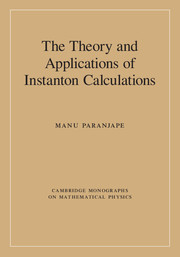Crossref Citations
This Book has been
cited by the following publications. This list is generated based on data provided by Crossref.
Korwar, Mrunal
and
Thalapillil, Arun M.
2018.
Finite temperature Schwinger pair production in coexistent electric and magnetic fields.
Physical Review D,
Vol. 98,
Issue. 7,
Gleiser, Marcelo
and
Sowinski, Damian
2018.
Configurational information approach to instantons and false vacuum decay in
D
-dimensional spacetime.
Physical Review D,
Vol. 98,
Issue. 5,
Dupuis, Éric
Haberichter, Mareike
MacKenzie, Richard
Paranjape, M. B.
and
Yajnik, U. A.
2019.
Vacuum decay induced by false Skyrmions.
Physical Review D,
Vol. 99,
Issue. 1,
Gamboa, J.
and
López-Sarrión, J.
2021.
Nonperturbative aspects of spontaneous symmetry breaking.
International Journal of Modern Physics A,
Vol. 36,
Issue. 13,
p.
2150074.
AK, Mine
2022.
4 Boyutlu Fermiyonik Modelde Kaosun Genelleştirilmiş Hizalama İndeksi Yöntemiyle İncelenmesi.
Iğdır Üniversitesi Fen Bilimleri Enstitüsü Dergisi,
Vol. 12,
Issue. 2,
p.
726.
Vicentini, Silvia
and
Rinaldi, Massimiliano
2022.
Vacuum decay in quadratic gravity.
The European Physical Journal Plus,
Vol. 137,
Issue. 3,
Paranjape, M. B.
and
Saxena, Yash
2024.
Thin-wall monopoles in a false vacuum.
Physical Review D,
Vol. 110,
Issue. 2,



